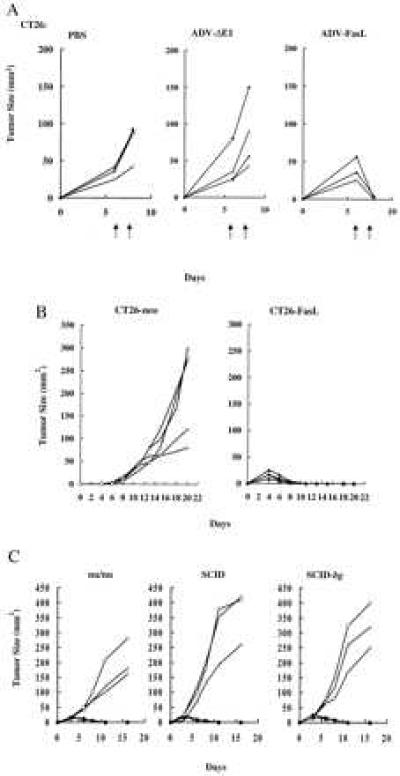Figure 3.

Regression of CT26 tumors after adenoviral-mediated or stable FasL gene expression. (A) Growth of CT26 tumor after adenovirus injection. CT26 cells (2 × 106 cells) were inoculated and injected with PBS, ADV-ΔE1, or ADV-FasL as in Fig. 2A (each at n = 4) on days 6 and 7 (arrows). (B) FasL expression induced rejection of CT26 cells in BALB/c recipient mice. The vector-transduced control CT26 line (CT26-neo) or the FasL-expressing CT26 line (CT26-FasL; n = 5) were inoculated subcutaneously into BALB/c mice (2 × 106 cells). Tumor cross-sectional area was calculated from the two-dimensional measurements with a caliper. (C) Rejection of CT26-FasL cells in immunodeficient mice. Nu/nu, SCID, and SCID-beige (SCID-bg) mice were inoculated with 2 × 106 CT26-FasL cell (solid symbols, each at n = 3) or CT26-neo (open symbols, each at n = 3), and tumor growth was monitored.
